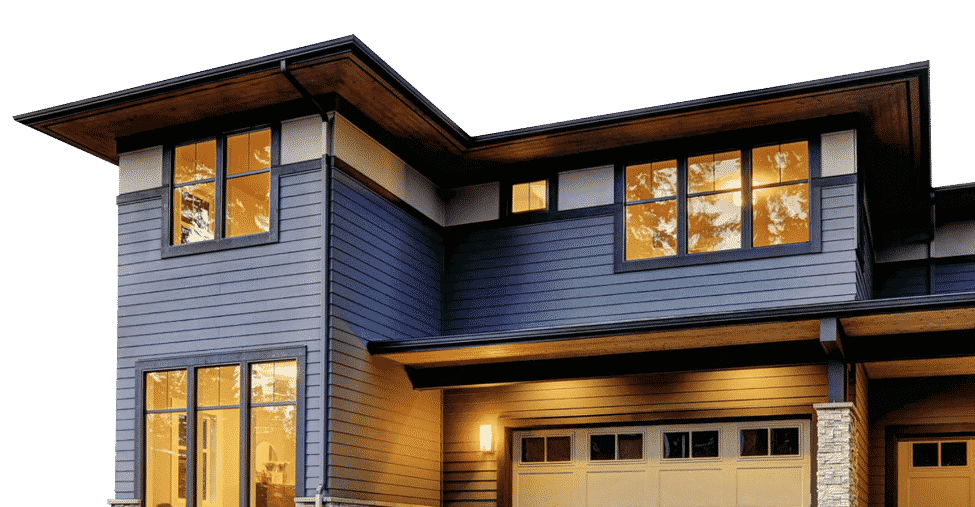Nothing lifts your mood like sunshine streaming through a wall of beautiful windows.
After all, research shows that having plenty of natural light in your home or workspace makes you happier and more productive.
Unfortunately, windows and lots of sunlight come with drawbacks as well.
- The sunshine makes your room uncomfortably warm
- Your furniture and carpet start to fade
- The windows make you feel less private
But before you throw in the towel and declare that your big windows aren’t worth it after all, you should be aware of a simple, relatively inexpensive solution: Residential window tint.
Here at Sun Stoppers, we offer residential window tint that blocks UV rays and prying eyes from entering your home while still allowing you to enjoy natural light and beautiful views.
It sounds too good to be true, right?
Honestly, it’s not! Keep reading to learn what residential window tint is, what types are available, and if it’s right for you.
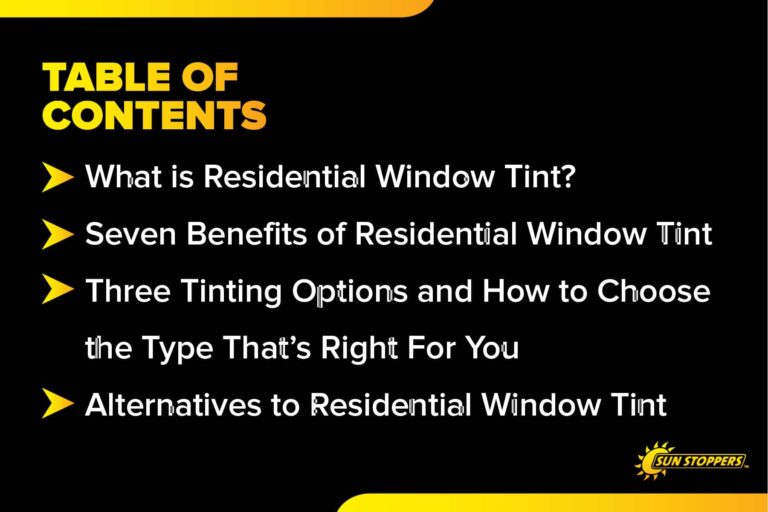
What is Residential Window Tint?
You’re probably familiar with tinted car windows. But did you know you can also tint your home’s windows?
Window tint is a thin film made of thermoplastic polymer resin. Inside the resin are metals or other tiny particles that block the sun’s harmful radiation, reflecting it back outside.
Modern window tinting is designed to be beautiful as well as functional. At Sun Stoppers, we guarantee that our high-quality XPEL window films will never bubble and peel, and we expect them to last 20 years or more.
From the outside, window tint may give your windows a shiny or darkened appearance, which improves the overall look of your home and windows and increases your privacy. Some window tints look nearly invisible from the inside, while others give you the feel of looking through a pair of expensive sunglasses.
7 Benefits of Residential Window Tint
Residential window tint offers multiple benefits to you and your home.
Let’s go through them one by one:
1 – Residential window tint keeps your house cool in the summertime
When you’re outside on a hot summer day, you feel heat from two sources:
First, you feel heat from the warm air surrounding you. And second, you feel heat from the solar radiation of the sun.
That’s why it feels so much cooler in the shade than in direct sunlight. Although the air temperature doesn’t change, you feel cool when you escape the direct solar radiation.
Your windows let in the beautiful sunshine, but they also let in the sun’s heat-producing radiation. Just like in a car or a greenhouse, the air of a sunny room heats up as the objects in the room absorb the radiation and convert it into heat energy, which is now trapped in the room.
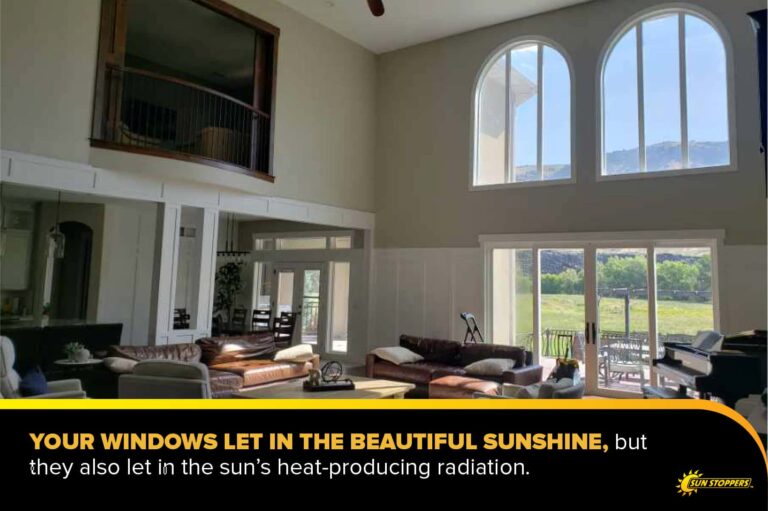
Your air conditioner has to work overtime to dispel all that hot air, running your electricity bills through the roof.
Window tint is designed to block heat-producing solar radiation, keeping your home as cool as a cucumber. Our window tint reduces solar heat gain.
2 – Residential window tint acts as insulation, even in winter
When it comes to insulation, windows are one of the weak spots in your home. Rooms with many windows often feel colder in winter, especially if you stand near a window, as the cold seeps through a pane of glass much more quickly than it does through your well-insulated walls.
Residential window tint helps by adding one more layer of insulation to your windows.
In the winter, this keeps the warm air from your furnace in and the cold air from the outdoors out. In the summer, this keeps the cold air from your air conditioner circulating around your home, as it should be, instead of leaking out into the warm outdoors.
3 – Residential window tint offers daytime privacy
If you have large beautiful windows in your home, you probably love to admire the view outside your window. But have you ever thought about who might be looking in your windows?
No one likes the nosy neighbors knowing all your business.
With window tint, you can be confident that no one outside can peer into your house during daylight hours.
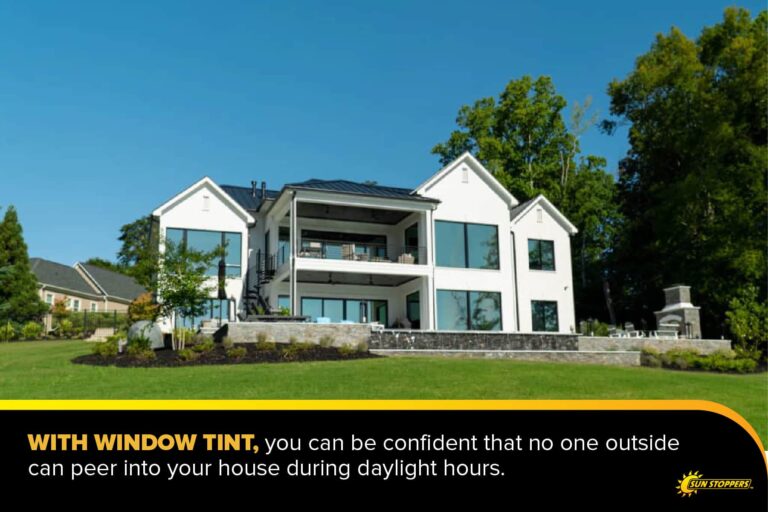
After dark, when the interior lights are on, is a different story. The reflective features no longer offer complete privacy because it’s now brighter inside than outside. Still, some tint options offer more nighttime privacy than others.
If your home’s windows are tinted you can increase nighttime privacy somewhat by having an outdoor light shining on your windows. You can also add additional privacy features such as roller shades or blinds.
4 – Residential window tint prevents fading
It’s so frustrating to watch your beautiful, carefully-selected furniture start to fade in the harsh light streaming through your windows.
What can you do? If you buy new items, won’t they just fade too?
Fading is caused by ultraviolet (UV) rays, which exist outside the visible spectrum of light. Window tint is specifically designed to block over 99% of UV rays, protecting your possessions from fading while still allowing visible light into the room.
5 – Residential window tint protects your skin
Your furniture and possessions aren’t the only things damaged by excessive UV rays. UV rays also damage your skin, causing premature aging, lupus flare-ups, or even skin cancer.
By blocking UV rays with residential window tint, you’re also keeping your skin happy and healthy!
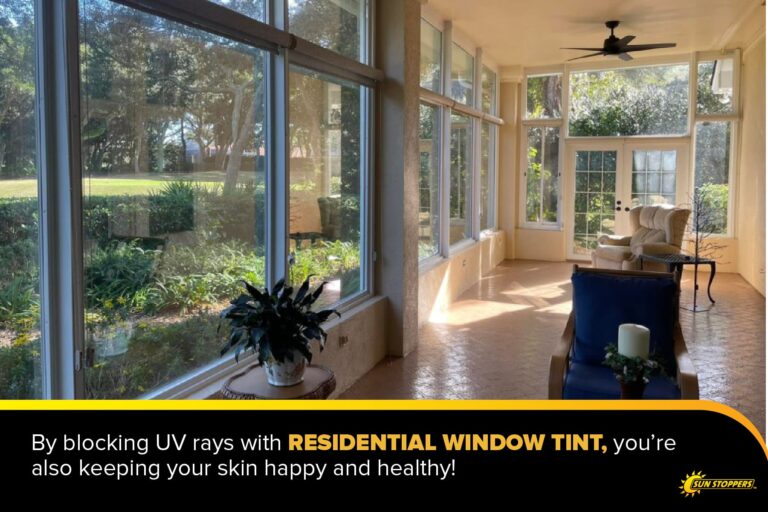
6 – Residential window tint reduces glare
Usually light helps us see better, but if we have too much light we encounter the opposite problem: The glare makes it harder to see.
This is particularly true with electronics. The glare from a window makes it difficult to watch TV or view your laptop screen properly.
But it’s true with other things as well. Even reading a book is difficult in harsh, glaring lighting. For some people, glare also causes headaches.
Window tint reduces glare while still allowing in enough light so you can properly see.
7 – Residential window tint saves you money
Finally, residential window tint saves you money in the long run.
The most obvious way window tint saves you money is through air conditioning costs in the summer. Blocking the heat-producing radiation puts much less strain on your air conditioning unit, and your energy bills will decrease dramatically.
However, window tint saves you money in other ways. Its insulating effects should save you on energy costs in the winter as well, although the difference won’t be nearly as dramatic as it is in the summer.
You’ll save money by not needing to upgrade your furniture as often since it won’t fade as quickly.
Finally, you’ll save money on your health in the long run by blocking UV rays from your home.
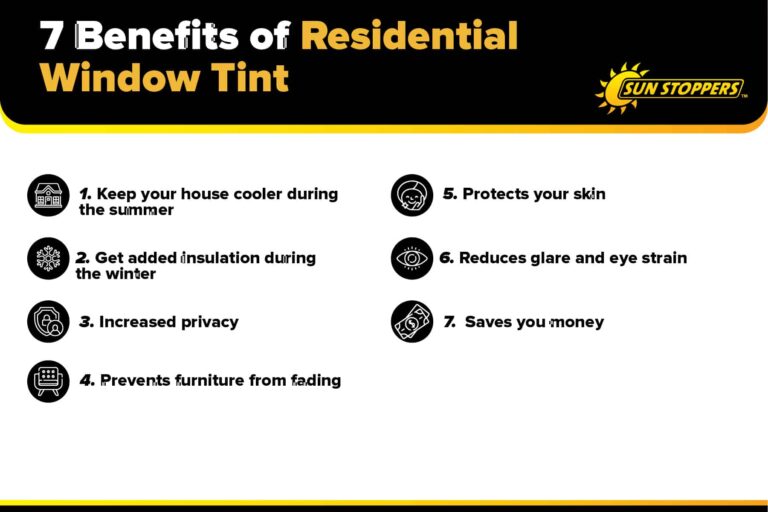
Three Tinting Options and How to Choose the Type That’s Right For You
When tinting your windows, you’ll want to think about two things: the type of tint and the visible light transmission.
Visible light transmission (VLT) is a measurement of the amount of light transmitted through a material. For instance: if your window tint is 70% VLT, your windows will still let in plenty of light, and the tint will seem nearly invisible.
On the other hand, a 5% VLT blocks most of the light, and the view from your window will seem quite dark.
A limousine, for instance, typically has a 5% VLT tint, keeping the vehicle dark and private. Most tinted car windows are somewhere in the 15% to 20% VLT range.
Of course, a 70% VLT tint also lets in more heat and glare than a 5% VLT. When choosing your shade of window tint, it’s crucial to think about how many large windows you have, how much light you want, and what you want the view to look like. You can still see out of a lower VLT window tint, but the view will be darker.
It’s also important to think about the type of window tint you want. Here at Sun Stoppers, we offer three basic types of residential window tint:
1 – Silver Reflective Window Tint
Silver reflective window tint is the most basic, widely-used window tinting option. It contains metallic particles which reflect heat and glare away from your home, giving your windows a lovely mirrored look.
Silver reflective window tint is popular because it’s cost-effective, does its job well, and looks beautiful.
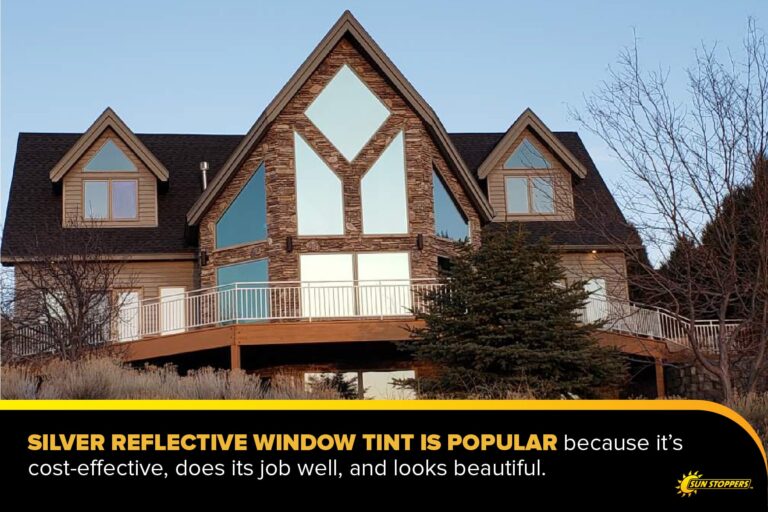
During the day, with the bright sun outside, your windows will look mirrored on the outside without affecting the view from the inside. The only downside is that at night, the mirrored effect is reversed. Since there’s more light inside than out, people outside will be able to look in the windows, while people inside will see nothing but their own reflections.
2 – Dual Reflective Window Tint
Dual-reflective window film was created specifically to address the issues with silver reflective film. It’s designed to be reflective on the outside but not the inside, creating a one-way mirror effect that doesn’t reverse when the sun sets.
Although it’s more expensive than silver reflective tint, many people find it’s worth it to see out their windows at night and to do a better job of keeping prying eyes out.
3 – Neutral Window Tint
If you’re not a fan of the mirrored look, you might want to consider some neutral window tint. Neutral window tint is designed to block heat and UV rays without creating extra shine.
Like dual-reflective tint, neutral window tint allows you to still see out your windows at night. However, since it’s non-reflective, it doesn’t offer the same level of daytime privacy that dual-reflective or silver tint does.
However, it still reduces glare, keeps your furniture from fading, and all the other benefits we mentioned before.
Ultimately, it comes down to which look you prefer and how much you value nighttime privacy.
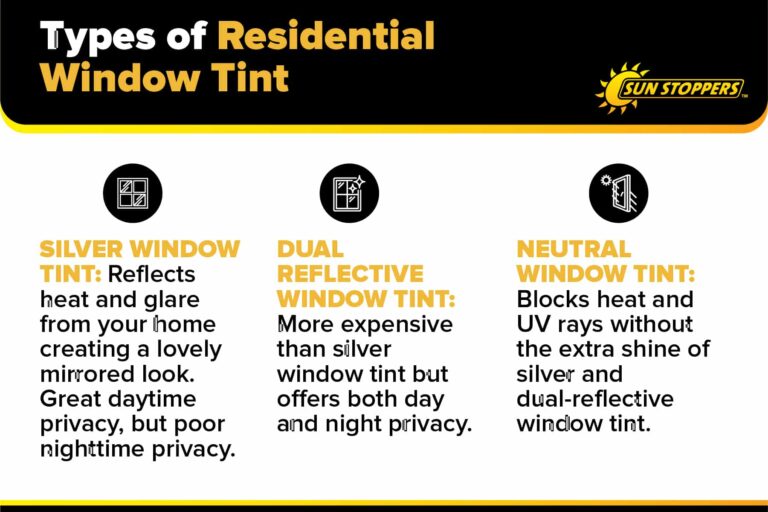
Alternatives to Residential Window Tint
As you deal with the heat, UV rays, and privacy concerns caused by your windows, you’ll find window tinting to be a great solution.
However, window tinting is not the only solution.
It’s worth looking into other sunblocking options, so you can find the solution that’s right for you.
Frosted film
If your main concern is privacy, you might want to consider a frosted film instead of window tint. Glass with a frosted film gives you privacy day or night. Frosted film can also be used for decorative purposes, as it comes in a variety of designs.
On the other hand, while the design blocks a small amount of light, it doesn’t block UV rays. Frosted glass provides privacy in interior windows and spaces like bathrooms where you want both privacy and plenty of natural light.
Remember, frosted film blocks visibility both ways. It prevents people from seeing into private spaces such as bathrooms, but it also blocks people inside from seeing out.
Shades
One popular solution for the sunlight problem is to install roller shades. These can be raised or lowered to block the sun and provide privacy.
The nice thing about shades is that you can fully block the sunlight during the day, and at night you can ensure complete privacy in a way you never can with window tint. You can also raise them if you are in the mood for more sunlight.
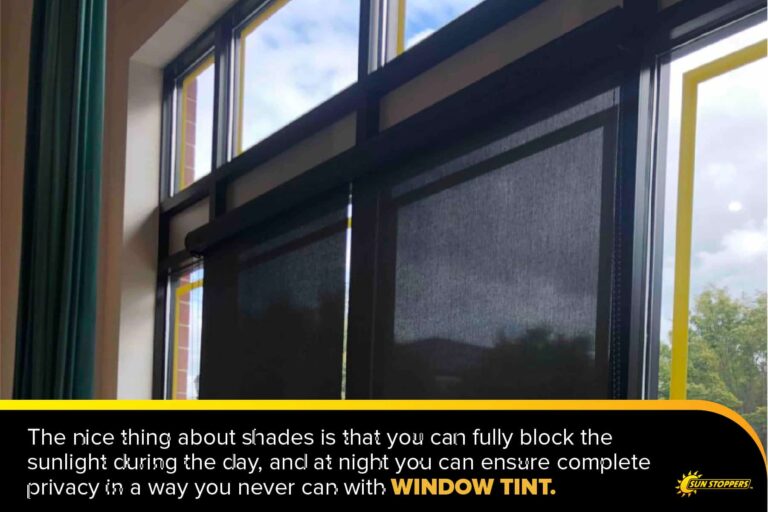
On the other hand, shades are pretty much all-or-nothing. Window tint gives a nice in-between, where you can enjoy the view and some sunlight while still blocking heat and harmful rays.
Of course, it doesn’t have to be one or the other. Many people install both window film and shades.
Blinds
Like shades, window blinds allow you to completely block light during the day and attain privacy at night.
Blinds are a little more complex than shades. While shades consist of one sheet of material that you pull down over your window, blinds are made up of slats.
On the one hand, this makes them harder to clean, as the slats collect dust. But on the other hand, blinds give a lot more sunlight control than shades do. You can close your blinds completely or adjust the slats so the light beams hit the floor, beam straight ahead, or point to the ceiling.
This allows you to let light in but still keep it from glaring in your eyes or on your screen.
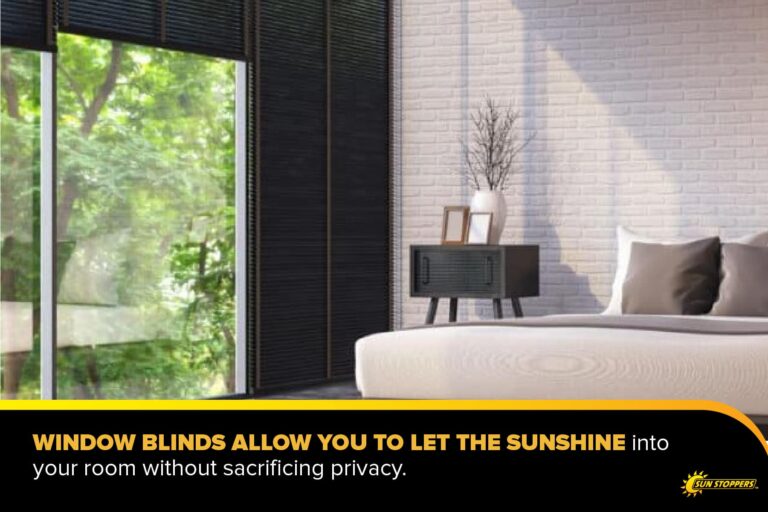
Adjusting the slats also helps maintain privacy while still letting in some light.
While blinds give you more control of the light overall, the UV rays you let into your home still do their damage.
Of course, as with shades, you always have the option to get both blinds and window tint.
Conclusion
Are you ready to tint the windows of your home?
Remember: While it’s possible to apply window tint yourself, your window tint is only as good as its application. If you want your windows to look professional, we recommend getting a professional to install it for you.
Here at Sun Stoppers, we have over 20 years of experience applying window tint. You can be confident that we’ll install it correctly the first time, with no bubbles or wrinkles.
Our professional installers will handle the whole process from start to finish. We offer competitive pricing and will complete the project promptly.
In fact, while multiple factors affect the longevity of the window tint, we expect our window films to last at least 20 years.
Ready to get started? Get a free quote now!
In addition to residential window tint, we also offer:
- Security film
- Frosted and decorative film
- Commercial window tint
- Vehicle window tint
- Paint protection
- Ceramic coating
Contact us today! We look forward to hearing from you.


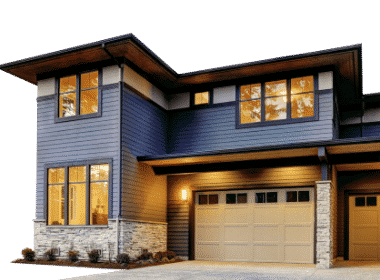
 Visit Us Today
Visit Us Today